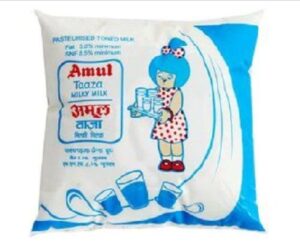National Family Health Survey-5 factsheets constituting 342 districts of Phase I States/UTs released
New Delhi, 15 Dec 2020: Dr. Harsh Vardhan, Union Minister of Health and Family Welfare, Government of India, released the Factsheets of key indicators on population, reproductive and child health, family welfare, nutrition and others for 22 States/UTs of the first Phase of the 2019-20 National Family Health Survey (NFHS-5) on Universal Health Coverage Day on 12th December, 2020.
These results are available on the Ministry’s website, www.mohfw.gov.in. These 22 Phase-I States/UTs are Andhra Pradesh, Assam, Bihar, Goa, Gujarat, Himachal Pradesh, Karnataka, Kerala, Maharashtra, Manipur, Meghalaya, Mizoram, Nagaland, Sikkim, Telangana, Tripura, West Bengal, Andaman Nicobar Island, Dadra and Nagar Haveli and Daman and Diu, Jammu & Kashmir, Ladakh and Lakshadweep. The fieldwork in the remaining 14 (Phase-II) States/UTs is currently under progress.
The main objective of successive rounds of the NFHS is to provide reliable and comparable datasets on health, family welfare and other emerging issues. Four rounds of NFHS (1992–93, 1998–99, 2005–06 and 2015–16) have been successfully completed in India. All the rounds of NFHS have been conducted by the International Institute for Population Sciences (IIPS), Mumbai, as the national nodal agency. Earlier the Health Ministry itself used to conduct District Level Health Survey (DLHS) and Annual Health Survey (AHS). MoHFW has decided to conduct integrated NFHS with a periodicity of three years in lieu of different surveys from 2015-16 onwards to meet the evolving requirements for frequent, timely and appropriate data at the National, State and District levels. The NFHS-5 is being conducted in around 6.1 lakh sample households to provide disaggregated data up to district levels. And this data so generated when completed would be comparable with NFHS-4 without any loss of information.
The state factsheet released include information on 131 key indicators. The district level factsheets constituting 342 districts of theses Phase I States/UTs that have been uploaded on 14th December, 2020 on the website of the Ministry and has information on 104 key indicators. These important indicators on population, health and family welfare, nutrition and others will help track progress of Sustainable Development Goals (SDGs) in the country. Many indicators of NFHS-5 are similar to those of NFHS-4, carried out in 2015-16 to make possible comparisons over time. However, NFHS-5 that includes new focal areas such as expanded domains of child immunization, components of micro-nutrients to children, menstrual hygiene, frequency of alcohol and tobacco use, additional components of non-communicable diseases (NCDs), expanded age ranges for measuring hypertension and diabetes among all, aged 15 years and above, will give requisite input for strengthening existing programmes and evolving new strategies for policy intervention.
The key results from the State/UT factsheets are as follows:
- The Total Fertility Rates (TFR) has further declined since NFHS-4 in almost all the Phase-1 States and UTs. The replacement level of fertility (2.1) has been achieved in 19 out of the 22 States/UTs and only 3 states viz. Manipur (2.2), Meghalaya (2.9) and Bihar (3.0) have TFR above replacement levels now.
- Overall Contraceptive Prevalence Rate (CPR) has increased substantially in most States/UTs and it is the highest in HP and WB (74%). Use of modern methods of contraception has also increased in almost all States/UTs.
- Unmet needs of family planning have witnessed a declining trend in most of the Phase-1 States/UTs. The unmet need for spacing which remained a major issue in India in the past has come down to less than 10 per cent in all the States except Meghalaya and Mizoram.
- Full immunization drive among children aged 12-23 months has recorded substantial improvement across States/UTs/districts. More than two-third of children are fully immunized in all the States and UTs except Nagaland, Meghalaya and Assam. In almost three-fourths of districts, 70% or more children aged 12-23 months are fully immunized against childhood diseases.
On comparing NFHS-4 and NFHS-5 data, the increase in full immunization coverage is observed to be expeditious in many states and UTs; in 11 out of the 22 states/UTs, the increase was to the tune of over 10 percentage point and in another 4 states/UTs between 5 to 9 percentage point over the short span of 4 years. This can be attributed to the flagship initiative of Mission Indradhanush launched by the government since 2015.
- There is increase in the per cent of women receiving the recommended four or more ANC visits by health providers in many States/UTs. This percentage has increased in 13 States/UTs between 2015-16 to 2019-20.
- Institutional births have increased substantially with over four-fifth of the women delivering in institutions in 19 States and UTs. Institutional delivery is over 90 per cent in 14 out of the total 22 Sates and UTs. Almost 91% of districts recorded over 70% institutional deliveries of births in the 5 years preceding the survey.
- Along with an increase in institutional births, there has also been a substantial increase in C-section deliveries in many States/UTs especially in private health facilities.
- Sex ratio at birth has remained unchanged or increased in most States/UTs. Majority of the states are in normal sex ratio of 952 or above. SRB is below 900 in Telangana, Himachal Pradesh, Goa, DNH & DD.
- Child nutrition indicators show a mixed pattern across states. While the situation improved in many States/UTs, there has been minor deterioration in others. Drastic changes in respect of stunting and wasting are unlikely in a short period.
- Anaemia among women and children continues to be a cause of concern. More than half of the children and women are anaemic in 13 of the 22 States/UTs. It has also been observed that aanaemia among pregnant women has increased in half of the States/UTs compared to NFHS-4, in spite of substantial increase in the consumption of IFA tablets by pregnant women for 180 days or more.
- For both women and men, there is a lot of variation in the high or very high random blood glucose levels across States/UTs. Men are more likely to have slightly higher blood glucose levels in the range of high or very high compared to women. The percentage of men with high or very high blood glucose is highest in Kerala (27%) followed by Goa (24%). Prevalence of elevated blood pressure (hypertension) among men is somewhat higher than in women.
- The percentage of households with improved sanitation facility and clean fuel for cooking has increased in almost all the 22 States/UTs over the last four years (from 2015-16 to 2019-20). The Government of India has made concerted efforts to provide toilet facilities to maximum households through Swachh Bharat Mission, and improved household environment through Pradhan Mantri Ujjwala Yojana in the country. For instance, the use of cooking fuel has increased more than 10 percentage point in all the States and UTs during the last 4 years with over 25 percentage point increase in states of Karnataka and Telangana.
- Women’s empowerment indicators portray considerable improvement across all the States/UTs included in Phase 1. Considerable progress has been recorded between NFHS-4 and NFHS-5 in regard to women operating bank accounts. For instance, in the case of Bihar the increase was to the tune of 51 percentage point from 26 per cent to 77 per cent. More than 60 per cent of women in every state and UTs in the first phase have operational bank accounts.
It may also be stated that recurrent floods in Kerala during the time of survey as well as the previous year may have affected the utilization of maternal care services and hence, it may have some unusual/unexpected trend in some of maternal care indicators for some of the districts. In Tripura from the 4 districts which were previously existing at the time of NFHS-4, 8 new districts were formed which were covered in NFHS-5. This could have led to compositional changes of the population thereby, being one of the factors impacting negatively the levels of some of the indicators of the state. It should also be noted that while interpreting and comparing the trends for smaller States/UTs where sample sizes are small proper caution needs to be taken.
The fieldwork in the 14 States/UTs in Phase-II was launched in January 2020. At the time of national lockdown (at the end of March, 2020), around 38% of the fieldwork was completed in these States/UTs. With the easing of lockdown, the field operations have resumed from mid-November, 2020 in these States/UTs. Keeping in view of the prevailing COVID-19 situation, a lot of planning and preparations have been carried out in terms of the necessary revisions in the survey protocols and protective measures to resume fieldwork in Phase II States/UTs. Field work is expected to be over by February/March, 2021 and key indicators for second phase States/UTs will be available around May, 2021. The national level indicators including most of the SDG health indicators are expected to be available by June/July, 2021.








